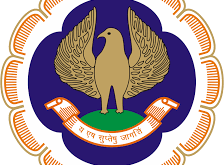Have you ever pondered why breast cancer affects multiple generations in some Indian families? This question haunts many caregivers, who watch loved ones endure the disease and yearn to shield the next generation. In India, where breast cancer ranks as the most common cancer among women according to GLOBOCAN data, a hereditary link often plays a silent role. Mutations in genes like BRCA1 and BRCA2 can pass down risks, turning family history into a pressing concern. Yet, awareness and timely genetic testing offer a path to empowerment, allowing families to act before the disease takes hold.
What Is Hereditary Breast Cancer?
Hereditary breast cancer occurs when gene mutations passed from parents increase a person’s risk of developing the disease. While most breast cancers result from lifestyle or environmental factors, inherited mutations, especially in the BRCA1 and BRCA2 genes impair the body’s ability to repair damaged DNA, allowing abnormal cells to grow. Indian studies, including those from the All India Institute of Medical Sciences (AIIMS), have identified unique germline mutations in breast cancer susceptibility genes, revealing a distinct genetic profile in the population. Though not every carrier develops cancer, those with such mutations, particularly in families with early-onset cases require greater awareness and regular monitoring.
The Role of BRCA1 and BRCA2 Genes
The BRCA1 and BRCA2 genes act as the body’s DNA repair guardians, preventing the growth of cancerous cells. When mutated, they lose this protective function, significantly increasing the risk of breast and ovarian cancers. Research from Indian tertiary care centres, published in the Journal of Clinical Oncology, shows these mutations often cause cancers at younger ages and may affect both breasts. With the average age of diagnosis in India between 45 and 50 years, these genetic mutations explain many familial cases, underscoring the importance of genetic awareness for early detection and preventive health planning.
Recognizing Early Signs and Symptoms
Early detection remains the most powerful defence. Be alert to:
-
A new lump or mass in the breast, especially if firm or irregular.
-
Changes in breast size, shape, or texture.
-
Skin dimpling, redness, or thickening.
-
Nipple inversion, discharge, or swelling in the armpit.
The Importance of Genetic Testing
Genetic testing for BRCA1 and BRCA2 helps uncover hidden cancer risks and guide preventive care with confidence. Recommended by the Indian Society of Medical and Paediatric Oncology, these tests, available across India, analyse blood or saliva samples to detect mutations. Doctors usually advise testing for those with a strong family history or early-onset cases. The process includes pre-test counselling, sample collection, DNA sequencing, and post-test guidance to interpret results and plan next steps. While a positive result may prompt enhanced screening or preventive measures, a negative test doesn’t eliminate all risk, as not every genetic factor is yet known.
By improving access to such tests, India’s healthcare system, supported by initiatives under the Ministry of Health and Family Welfare, is enabling families to take charge of their health and future.
Diagnosis and Treatment Options
Diagnosis usually begins with a clinical breast exam, followed by imaging such as a mammogram or ultrasound, and confirmed by biopsy. For hereditary cases, genetic insights refine treatment decisions.
Treatment depends on the cancer’s stage and biology. Surgery (lumpectomy or mastectomy) removes tumors; radiation therapy targets remaining cells; and chemotherapy drugs like paclitaxel address advanced disease. Hormone therapies benefit receptor-positive cancers, while targeted treatments such as PARP inhibitors are particularly effective in BRCA-mutated cases.
Indian cancer care increasingly emphasizes personalized treatment, balancing efficacy, side effects, and the patient’s quality of life through multidisciplinary care.
Prevention and Proactive Steps
While genes cannot be changed, risk can be managed. For families with hereditary risk, genetic counselling and testing help identify who needs closer surveillance.
Preventive strategies include:
-
Regular mammograms or MRIs for early detection.
-
Maintaining a balanced diet and regular exercise routine.
-
Limiting alcohol and avoiding smoking.
-
Breastfeeding, which offers natural protection.
-
Discussing preventive medications or surgeries where appropriate.
Community programs across India now promote self-examinations and clinical screenings from age 30 onwards, helping shift the culture from fear to proactive care.
Conclusion: Knowledge Protects Generations
Hereditary breast cancer, driven by BRCA1 and BRCA2 mutations, is a challenge shared across families, but it’s one that can be managed through awareness, testing, and informed choices. Genetic insights don’t predict destiny; they empower preparation. For caregivers, understanding family history and seeking medical advice early can prevent suffering and save lives. Speak to your doctor about genetic counselling if breast or ovarian cancer runs in your family.
A single conversation today could protect tomorrow.
Knowledge is strength, and when families act together, it becomes protection passed from one generation to the next.
Dr. Nandish Kumar Jeevangi , Sr. Consultant, Medical Oncology , HCG Cancer Center – Gulbarga
 Newspatrolling.com News cum Content Syndication Portal Online
Newspatrolling.com News cum Content Syndication Portal Online







